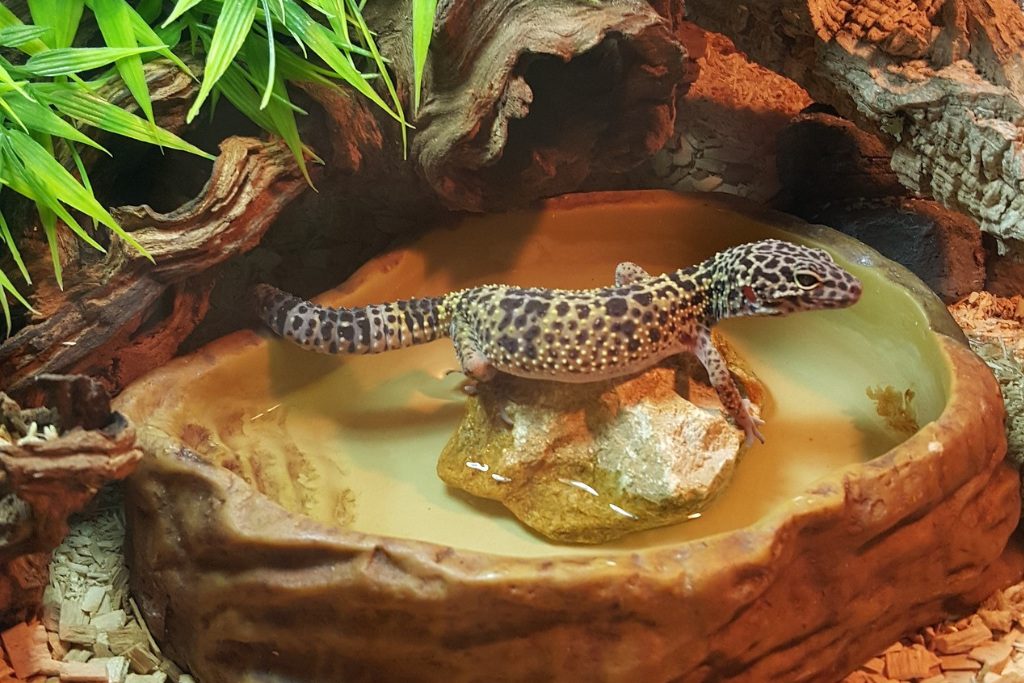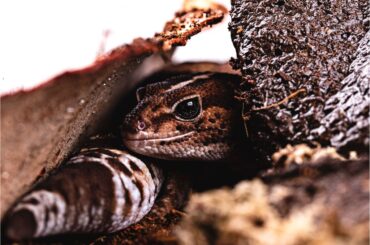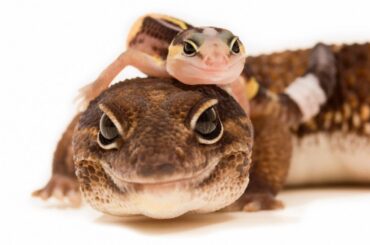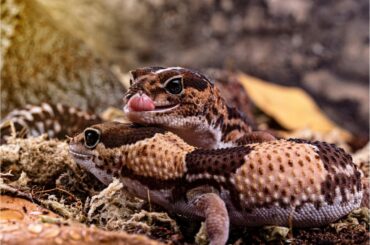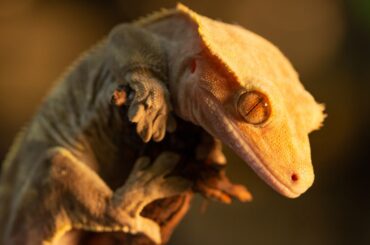Have you ever wondered if leopard geckos can swim?
Leopard geckos are popular pets, known for their unique behaviors, and whether they can swim or not is a topic of debate among reptile enthusiasts. Let’s dive in and discover more about these amazing creatures!
Reasons Why Leopard Geckos Cannot Swim
Let’s take a closer look at why leopard geckos are not natural swimmers. While some animals are excellent swimmers, leopard geckos are not built for swimming for several important reasons. Let’s explore these reasons below:
Natural Habitat and Adaptations
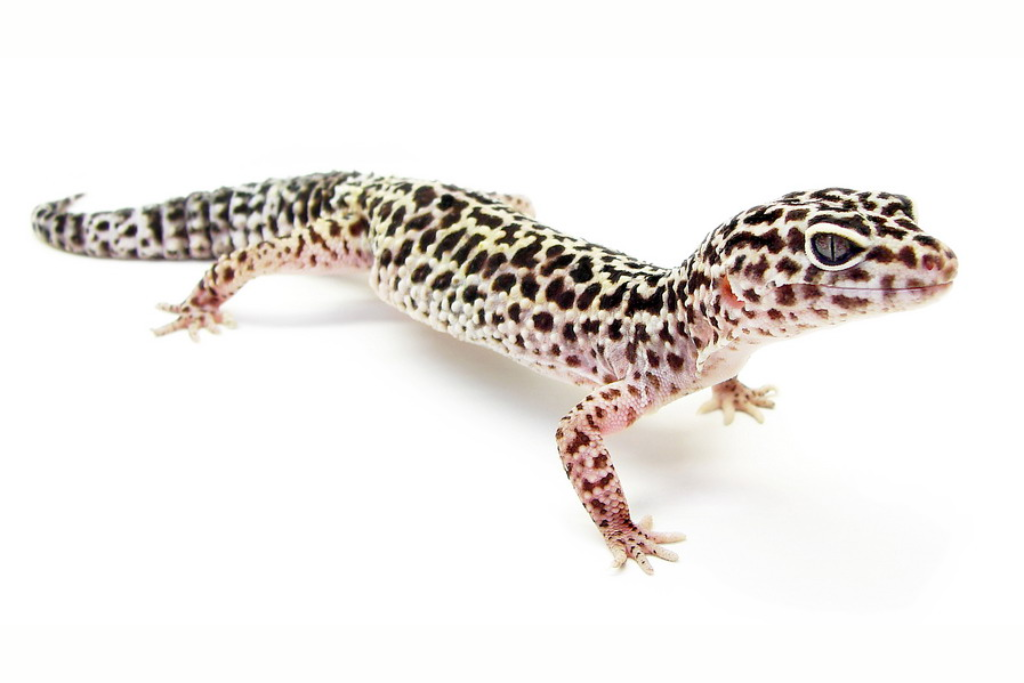
The intriguing leopard gecko is a lizard that prefers rocky, dry environments. Their natural habitat consists of deserts, where water is scarce and the climate is hot. These geckos have adapted to survive these harsh conditions by developing unique physical characteristics unsuited for swimming.
Leopard geckos prefer living in dry soil, rocks, and sand. They are excellent climbers and spend most of their time on the ground or hiding in crevices. Their habitat choice reflects their need for warmth and a dry environment. Unlike animals that live in water, such as fish or turtles, leopard geckos do not seek out bodies of water, like lakes or rivers.
One of the reasons leopard geckos are not good swimmers is their physical features. They have skinny legs and long, slender bodies, ideal for crawling and climbing but not propelling themselves through the water.
Unlike animals with webbed feet, such as ducks or frogs, leopard geckos have separate toes without any skin between them. This lack of webbing makes it challenging to paddle effectively or generate enough force to swim.
In addition to their body structure, leopard geckos have unique adaptations unsuitable for an aquatic lifestyle. Their skin is designed to conserve water in dry environments, which means it can become heavy and uncomfortable when soaked in water.
Leopard geckos breathe through their lungs and are not equipped with gills or other adaptations that allow them to breathe underwater like fish. These adaptations show that leopard geckos are not naturally adapted for swimming and are better suited to their dry and rocky habitats.
Stress and Potential Dangers
When leopard geckos are placed in water, it can be a stressful experience for them. They are not accustomed to swimming, and being in water can cause them to feel scared and anxious.
This stress can harm their overall well-being, as it can weaken their immune system and make them more vulnerable to diseases, especially respiratory problems. Leopard geckos have delicate lungs, and prolonged exposure to water can increase the risk of developing respiratory infections.
It is crucial to avoid keeping leopard geckos in water for extended periods. While they may be able to tolerate short dips or shallow water, it’s best to provide them with a habitat that mimics their natural environment, which is dry. This will help ensure their health and happiness as they are not naturally equipped for swimming.
Temperature Regulation
Maintaining a stable body temperature is critical for reptiles like leopard geckos. They rely on external heat sources to regulate their body temperature because their body temperature depends on the temperature of their environment.
When a leopard gecko is drenched in water, it can rapidly lose body heat. This sudden drop in temperature can be dangerous for them and negatively affect their overall health. Leopard geckos need to bask in warm areas to raise their body temperature and digest their food properly.
When Can You Put the Gecko in Water?
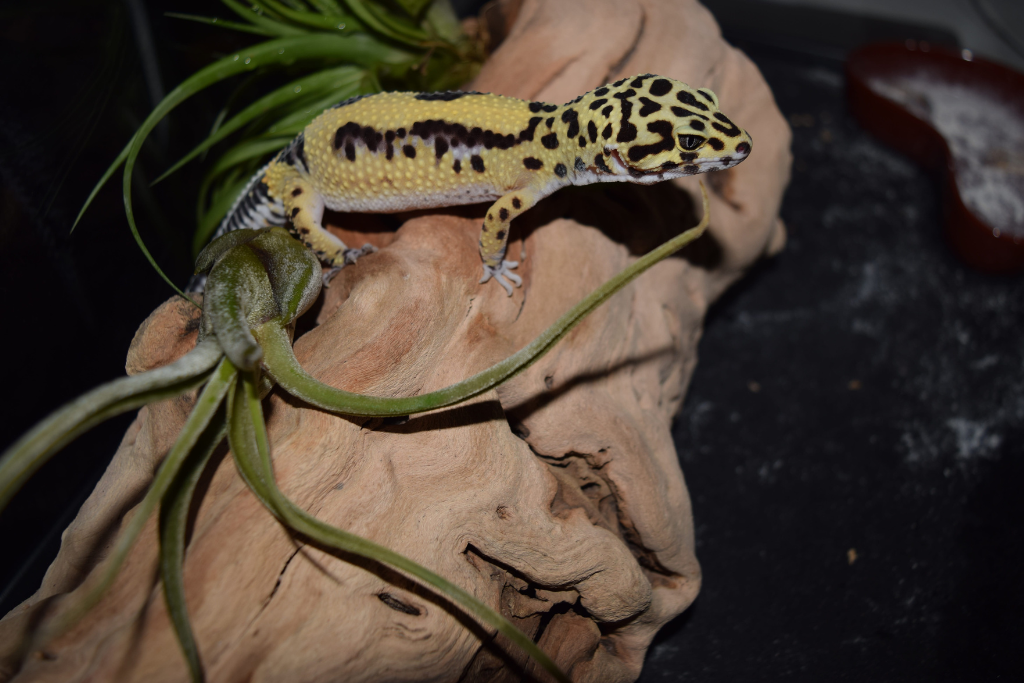
Understanding certain situations and ensuring geckos’ safety during the following activities is important.
For Bathing and Femoral Pore Unclogging
Sometimes, leopard geckos may need a bath to keep their skin clean or to unclog their femoral pores. Femoral pores are tiny openings on the underside of their legs that release oils. If these pores get clogged, it can cause discomfort for the gecko.
In such cases, a shallow bath can help loosen any dirt or debris. It’s crucial to use surface water that only reaches their belly and monitor them to ensure their safety. After bathing, gently pat them dry with a soft cloth.
For Drinking and Soaking
Like us, leopard geckos must drink water to stay healthy and hydrated. Providing them with a shallow water dish to access fresh water whenever needed is essential.
Leopard geckos may occasionally enjoy soaking in shallow water to aid in shedding their skin. This helps them remove old skin and allows the new skin to grow properly. However, it’s important to maintain a safe water level that only covers their lower body to prevent any accidents or drowning.
Remember, whenever you put your leopard gecko in water, be there to supervise them and ensure their well-being. By providing them with appropriate water-related activities and maintaining a safe environment, you can help keep your leopard gecko healthy and happy.
Comparison with Other Gecko Species
It’s interesting to know that some gecko species, like the Asian house gecko, have special abilities that allow them to move across the water. These geckos are lightweight, and their tiny toe hairs create a surface tension that helps them glide on the water’s surface. Remember that leopard geckos are different. They do not have these adaptations, and attempting similar water activities with them can be risky.
We must be cautious and avoid putting leopard geckos in deep water or expecting them to swim like other gecko species. Leopard geckos are not natural swimmers; they can become stressed or drown in deep water.
Conclusion
Leopard geckos cannot swim due to their body structure, lack of swimming adaptations, and preference for dry habitats. While some gecko species have unique abilities to move on water, leopard geckos are not designed for aquatic activities. Understanding their natural behaviors and providing appropriate care that aligns with their needs is important.
This includes avoiding deep water, monitoring their safety during necessary water-related activities, like bathing, and providing a shallow water dish for drinking and occasional soaking. By respecting their limitations and providing the right care, we can ensure the well-being and happiness of our leopard gecko friends.
FAQs
Do Leopard Geckos Swim?
No, leopard geckos do not swim because their bodies are not built for it.
Do Geckos Like Water?
While some geckos, like the Asian house gecko, can move on water, leopard geckos do not particularly like being in water and are not natural swimmers.
Can Leopard Geckos Breathe Underwater?
No, leopard geckos cannot breathe underwater. They have lungs and are not adapted to breathe underwater like fish or other aquatic animals.
Do Leopard Geckos Need to be Bathed?
Leopard geckos generally do not require regular baths. However, there may be instances where they need a bath to clean their skin or unclog their femoral pores. These baths should be shallow and closely monitored for their safety.
Can Leopard Geckos Drink Water?
Yes, leopard geckos need access to fresh water for drinking. It is important to provide them with a shallow water dish where they can drink whenever they need to stay hydrated.
Do Leopard Geckos Shed Their Skin?
Yes, leopard geckos undergo a process called shedding, where they shed their old skin to allow new growth.
How Often Do Leopard Geckos Shed Their Skin?
Leopard geckos shed their skin approximately once every 4 to 6 weeks, although the frequency may vary. Younger geckos tend to shed more frequently compared to adults.
What Do Leopard Geckos Eat?
Leopard geckos are insectivores, which means their diet primarily consists of live insects. They enjoy eating crickets, mealworms, waxworms, and other small insects.
How Often Should Leopard Geckos be Fed?
Leopard geckos should be fed every 2 to 3 days. The number of insects they should be fed depends on their age and size.
Can Leopard Geckos be Kept Together?
Leopard geckos are typically solitary creatures and prefer to live alone. Keeping multiple leopard geckos together, especially males, is not recommended, as they may become aggressive and fight.

